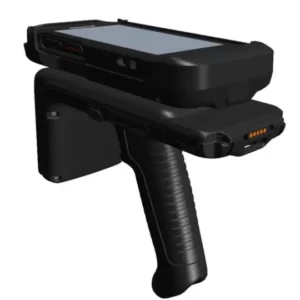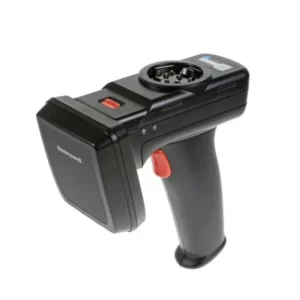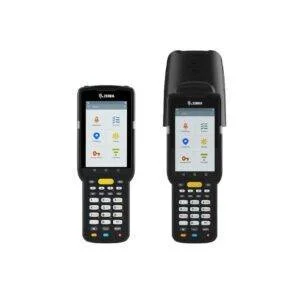Revolutionizing Retail: The Benefits of RFID Card Readers for Retailers
Revolutionizing Retail: The Benefits of RFID Card Readers for Retailers
Blog Article
In today’s competitive retail landscape, staying ahead of the curve requires leveraging technology that improves efficiency, enhances customer experiences, and drives profitability. One of the most significant innovations that has taken the retail industry by storm is RFID (Radio Frequency Identification), and more specifically, RFID card readers.
While barcodes have been the backbone of retail inventory and asset management for decades, RFID technology offers a more advanced and efficient alternative. This blog will explore how RFID card readers are transforming retail businesses, outlining the key benefits for retail owners and managers.
What Is RFID Technology?
At its core, RFID technology uses electromagnetic fields to automatically identify and track tags attached to objects. These tags can store data about the object, which can be read by an RFID reader from a distance, without the need for direct line-of-sight scanning, unlike traditional barcode systems.
An RFID card reader is a device that reads the information stored on RFID tags and cards, and it’s widely used in various sectors, including retail, for inventory management, security, and enhancing the overall customer experience.
1. Streamlined Inventory Management
Inventory management is the backbone of any successful retail operation. Managing stock levels, preventing stockouts, and ensuring that popular products are always available can make or break a retailer's reputation. RFID technology simplifies this process by automating and accelerating inventory tracking.
How RFID Helps:
- Quick Stock Audits: RFID card readers can scan multiple items at once, significantly reducing the time needed for stock counts. Traditional barcode scanning systems require scanning each item individually, which is labor-intensive and prone to human error.
- Increased Accuracy: With RFID, retailers can get a real-time view of inventory levels, reducing errors associated with manual stock counts. This leads to fewer discrepancies between actual and recorded inventory.
- Reduced Labor Costs: By automating inventory processes, RFID technology allows retailers to reallocate labor resources to other critical areas, such as customer service and sales.

Example in Action: Retail giant Zara uses RFID technology to track every item of clothing from the factory to the store floor. This allows them to respond quickly to stock shortages, keeping shelves full and customers happy.
2. Improved Loss Prevention and Security
Theft and inventory shrinkage are ongoing concerns for retailers. According to the National Retail Federation, retail shrinkage cost U.S. retailers $94.5 billion in 2021. While traditional security measures like CCTV and alarms play their role, RFID adds another layer of security.
How RFID Helps:
- Real-time Tracking of Items: RFID tags embedded in merchandise can trigger alerts if an item is taken out of the store without being purchased. RFID card readers at exits can detect unauthorized removal of goods.
- Enhanced Security Systems: When integrated with store security systems, RFID can automatically notify store personnel if a tagged item leaves the store under suspicious circumstances.
- Detailed Auditing: RFID provides a detailed audit trail of when and where each item was scanned, making it easier to identify trends in theft or mismanagement.
Example in Action: Many high-end retailers use RFID-tagged security labels on their products. This helps prevent theft and ensures that high-value items are only removed after proper payment has been made.
3. Faster and More Efficient Checkout Process
Long checkout lines can frustrate customers and result in lost sales. RFID technology speeds up the checkout process by allowing multiple items to be scanned at once. Rather than scanning each individual barcode, RFID card readers can detect all the items in a customer's basket instantly.
How RFID Helps:
- Rapid Scanning: RFID card readers can scan all items in a customer’s shopping cart simultaneously, significantly reducing wait times at the checkout counter.
- Seamless Self-Checkout: Many stores are now implementing RFID-enabled self-checkout stations. Customers can bag their items and simply walk through an RFID scanner, with the total amount being calculated and charged automatically.
- Increased Customer Satisfaction: Faster checkouts lead to happier customers who are more likely to return. A seamless experience can also increase customer loyalty.
Example in Action: Amazon’s Go stores utilize RFID technology, combined with other systems, to create a checkout-free shopping experience. Customers can walk in, grab what they need, and leave—RFID automatically tracks their purchases and charges their account.
4. Enhanced Customer Experience and Engagement
Personalization is key to building strong customer relationships in retail. RFID card readers can enable retailers to create a more personalized shopping experience by collecting data on customer preferences and shopping behaviors.
How RFID Helps:
- Personalized Promotions: RFID loyalty cards or apps allow retailers to track a customer’s purchasing history and offer personalized discounts or promotions based on their preferences.
- Customer Identification: When a customer with an RFID-enabled loyalty card enters the store, staff can be alerted, enabling them to offer tailored assistance or recommend products based on previous purchases.
- Interactive Shopping: RFID can also be used to create interactive experiences in-store. For example, smart mirrors in dressing rooms equipped with RFID readers can display product details or suggest complementary items when a tagged piece of clothing is brought inside.
Example in Action: Rebecca Minkoff stores use RFID technology in their smart fitting rooms. When customers try on clothing, RFID readers automatically detect the items and display them on a screen, offering styling suggestions and enabling customers to request different sizes.

5. Optimized Supply Chain and Logistics
RFID technology extends beyond in-store applications. It can streamline supply chain management, making it easier to track inventory from warehouses to store shelves. This leads to more efficient logistics and reduced operational costs.
How RFID Helps:
- Real-time Shipment Tracking: RFID readers at various points in the supply chain can track goods in transit, ensuring that retailers have a clear view of where their products are at all times.
- Improved Stock Replenishment: Retailers can automatically reorder items when stock levels fall below a certain threshold, ensuring that shelves are always stocked with popular products.
- Fewer Errors: RFID eliminates the manual scanning of shipments, reducing the likelihood of errors during receiving and stocking.
Example in Action: Walmart has implemented RFID technology across its supply chain to track products from the manufacturer to the store. This has improved their ability to manage stock, reduce shipping errors, and ensure that high-demand items are always available.

Conclusion: The Future of Retail is RFID-Driven
RFID card readers offer an array of benefits for retailers looking to enhance operational efficiency, improve customer experiences, and reduce costs. From streamlined inventory management to better loss prevention and faster checkouts, the advantages of RFID technology are undeniable.
As the retail industry continues to evolve, the adoption of RFID solutions will become increasingly important. Retailers who invest in RFID technology today are positioning themselves for success in the future, gaining a competitive edge through innovation and customer-centric solutions.
By embracing RFID technology, retail businesses can optimize operations, increase sales, and create a seamless shopping experience that keeps customers coming back. Report this page